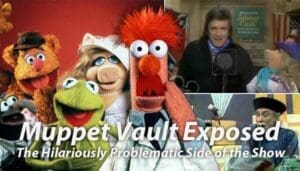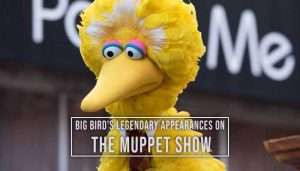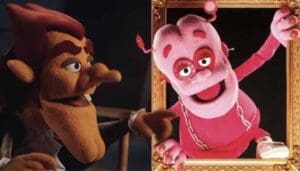For decades, the Muppets have occupied a unique, felt-covered space in our collective pop culture consciousness. We picture Kermit the Frog strumming his banjo in a swamp, Miss Piggy delivering a swift karate chop, or the denizens of Sesame Street teaching us our ABCs. These characters feel intrinsically linked to the creative genius of Jim Henson and the subsequent stewardship of The Walt Disney Company or the dedicated mission of Sesame Workshop. Yet, the story of the Muppets isn’t confined to their familiar home stages. Long before and even after achieving global fame through their own productions, these beloved characters embarked on surprising adventures into territories owned and operated by others – network variety shows, competing television channels, national advertising campaigns, and major cultural events.
This exploration delves into the lesser-known history of Muppet appearances in media not primarily produced by The Jim Henson Company or its direct successors. We’ll uncover verified instances where Kermit, Rowlf, Big Bird, and their colleagues stepped outside their usual productions, appearing as guests, pitchmen, or even experimental subjects on shows, commercials, and stages run by external companies. These external crossovers offer a fascinating glimpse into the Muppets’ evolving popularity, Jim Henson’s strategic brilliance, the complexities of character licensing, and the remarkable adaptability that has kept these creations relevant for over half a century.
Before The Muppet Show: Invading the Airwaves
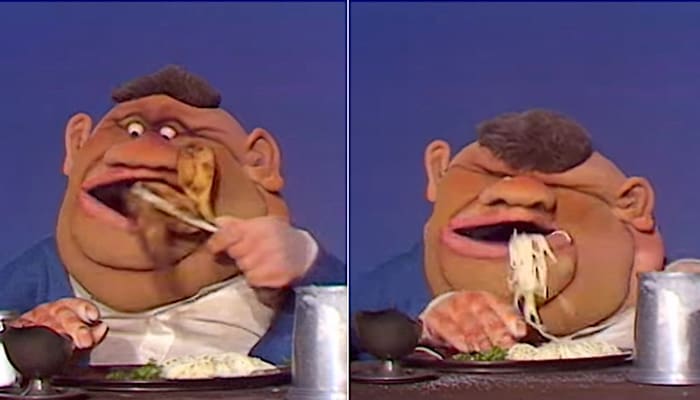
In the years preceding the 1976 debut of The Muppet Show, Jim Henson was a tireless innovator seeking a national platform for his unique brand of puppetry. Beyond the local success of Sam and Friends in Washington D.C. and a growing portfolio of commercials, Henson strategically placed his creations onto the biggest stages network television had to offer, using established, non-Henson productions as launchpads.
The Ed Sullivan Stage (CBS): A Prime-Time Showcase
Perhaps the most crucial early platform was CBS’s The Ed Sullivan Show. Between 1966 and 1971, the Muppets made an astonishing 25 appearances on this Sunday night institution, a testament to Sullivan’s embrace of their novelty and Henson’s burgeoning talent. These weren’t mere walk-ons; they were opportunities to experiment wildly in front of a massive national audience, far from the constraints of Henson’s own production capabilities at the time.
Their debut on September 18, 1966, was indicative of the often-abstract nature of these early spots: a goofy green monster played guitar, sprouted multiple heads playing other instruments, then shrunk into a rock only to be eaten by a bird Muppet. Kermit the Frog, already a veteran of Sam and Friends, appeared in various guises. He donned a blonde wig to lip-sync “I’ve Grown Accustomed to Your Face” (voiced by Rosemary Clooney) and channeled the era’s counter-culture as a beatnik philosopher discussing the complexities of “visual thinking”.
The Sullivan stage also served as an incubator for characters who would later populate Sesame Street. An early, green-furred version of Grover, then called “Gleep,” appeared in a 1967 Christmas sketch alongside host Arthur Godfrey as Santa. By May 1970, the character, now blue and officially named Grover, performed “What Kind of Fool Am I” with Kermit. Big Bird also made an early appearance, albeit in a less refined form controlled by a costumed performer with a noticeably smaller head. Even proto-Cookie Monster concepts surfaced, like the “Monster Eating Machine” sketch where a Muppet devoured a computer, offering social commentary on consumerism, and “The Glutton,” who ate everything in sight, including Sullivan’s hand.
These appearances weren’t limited to kid-friendly fare. Muppets performed abstract pieces like “Business, Business” and tackled songs by The Beatles (“Octopus’s Garden,” “Come Together”) and other contemporary hits like “Java” and the soon-to-be iconic “Mah Na Mah Na”. The sheer volume and creative latitude afforded by the Sullivan show, a major CBS production independent of Henson, provided an invaluable testing ground. It allowed Henson to gauge national audience reactions to different Muppet styles – from abstract monsters to character-driven sketches – effectively conducting large-scale market research facilitated by one of television’s most powerful gatekeepers.
Rowlf: From Selling Dog Food to Jimmy Dean’s Right-Hand Dog (Purina, ABC)
While Kermit was exploring his philosophical side on CBS, another Henson creation, Rowlf the Dog, was charming audiences elsewhere. Rowlf’s journey began not on a variety stage, but in commercials for Purina Dog Chow starting in 1962, often produced for the Canadian market. His big break came in 1963 when he was cast as the piano-playing sidekick to country singer Jimmy Dean on ABC’s The Jimmy Dean Show.
This role was historic: Rowlf became the first Muppet character to appear regularly on network television, featuring in 85 of the show’s 86 episodes between 1963 and 1966. The Jimmy Dean Show was an ABC production, giving Henson another significant foothold on a major network outside his direct control. Rowlf’s segments, performed by Henson with assistance from Frank Oz, became immensely popular, reportedly drawing two thousand fan letters a week. His laid-back, deadpan humor provided a perfect foil to Dean’s earnest country persona. The partnership was so successful and amicable that Henson offered Dean a 40% stake in his company, which Dean graciously declined, stating he hadn’t done anything to earn it. Their collaboration even extended beyond Dean’s own show, with a final joint appearance on The Ed Sullivan Show on October 8, 1967, performing the song “Friendship”.
Rowlf’s sustained success over three years on a major network program demonstrated conclusively that a Muppet character could connect with viewers on a weekly basis and maintain popularity beyond novelty value. This consistent performance on an ABC platform provided crucial evidence supporting the viability of a full-fledged Muppet television series, directly influencing the eventual development and pitching of The Muppet Show.
Chatting with Paar and Allen (NBC): Early Network Beachheads
Alongside their prominent gigs on CBS and ABC, Henson and his Muppets cultivated a relationship with the third major network, NBC. Starting as early as 1956, they made guest appearances on The Tonight Show, hosted first by Steve Allen and later by Jack Paar. These appearances on NBC productions provided further national exposure.
Jim Henson’s first national television appearance occurred on The Steve Allen Show on November 4, 1956, featuring Kermit (pre-frog) and the character Yorick performing “I’ve Grown Accustomed to Your Face”. Other Allen show appearances included sketches showcasing the Muppets’ signature blend of music and escalating chaos, like one involving a banjo player being progressively annoyed by a snare drummer.
After Paar left The Tonight Show, he hosted a primetime Friday night variety series, The Jack Paar Program, where the Muppets were invited as guests five times. Memorable appearances included the “Glow Worm” sketch (taped November 1964, aired December 18, 1964), a recurring bit where Kermit eats progressively larger worms until the last one turns out to be the nose of a monster that eats him. Another appearance in April 1965 featured a sophisticated robot puppet that commented on technology before inevitably self-destructing. A May 1965 spot featured three odd creatures repeating a nonsense phrase with jazz accompaniment. It was during the 1964 taping for the “Glow Worm” sketch that Henson, Frank Oz, Jerry Juhl, and Don Sahlin famously decorated a closet full of pipes in their NBC dressing room with scrap fur and paint, creating the “Muppet Pipes” that became a piece of NBC lore and are now part of the studio tour.
Henson’s consistent work across multiple NBC programs, including The Today Show , built a strong, long-term relationship with the network’s producers and executives. This familiarity established Henson and his Muppets as reliable, albeit unconventional, entertainers within the NBC ecosystem, likely paving the way for future, more ambitious collaborations, including the controversial arrangement with Saturday Night Live a decade later.
Muppets for Hire: A History in Advertising
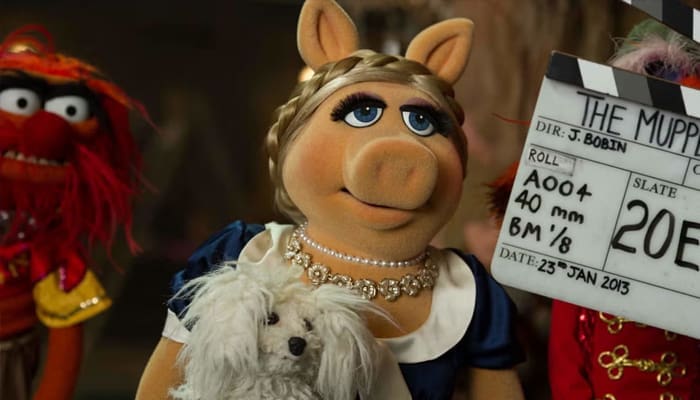
Separate from their variety show appearances, Muppets frequently moonlighted as commercial spokes-puppets, lending their unique appeal to sell everything from coffee to cars. These appearances represent another significant category of Muppet work within non-Henson productions, where the characters were licensed specifically to serve a client’s brand message. The nature of these commercials evolved dramatically over time, from quirky, sometimes darkly humorous local spots in the early days to polished, high-budget national campaigns featuring celebrity co-stars after the Muppets became globally recognized icons under Henson’s expanded company structure and, later, Disney ownership.
Coffee, Bread, and Chaos: The Wild Early Commercials
Before the Muppets were a household name synonymous with family entertainment, Jim Henson’s team created hundreds of commercials, often for local or regional clients. These early ads served not only as a vital income stream but also as a remarkably fertile ground for experimentation.
The most famous examples are the 179 commercials produced between 1957 and 1961 for Wilkins Coffee, a Washington D.C. brand. Constrained by ten-second slots for station identification, these ads had to deliver their pitch in a mere eight seconds. They featured the iconic duo of Wilkins, the cheerful coffee enthusiast, and Wontkins, the grumpy skeptic. To grab attention quickly, the spots relied on rapid-fire gags and a surprising level of slapstick, often violent, humor. Wontkins was frequently subjected to cannons, electrocution, being run over, or threatened with guns for his refusal to drink Wilkins. This dark humor, embraced by the local client, allowed for creative risks unlikely to be approved for network television at the time. The success of the Wilkins campaign led to numerous remakes for other local brands across the country, including Community Coffee and Wilkins Tea.
This period saw Muppets shilling for a wide array of products, often employing the Wilkins/Wontkins enthusiast/skeptic dynamic:
- Claussen’s Bread: Featured a prototype Kermit alongside the character Mack, with ads sometimes involving threats or cartoon violence for brand non-compliance.
- RC Cola: Starred Nutty Bird, whose manic enthusiasm for the “quick-fresh energy” drink bordered on addiction, much to the chagrin of the aptly named Sour Bird.
- Munchos: Introduced Arnold, a purple, Munchos-obsessed precursor to Cookie Monster, paired with the remarkably bland human-like Muppet, Fred.
- Purina Dog Chow: As mentioned earlier, served as the origin point for Rowlf the Dog, initially paired with Baskerville the Hound.
- La Choy Chow Mein: Featured a memorable dragon character.
- Other Clients: Included Esskay Meats , Wilson’s Meats (with characters Scoop and Skip) , Kern’s Bread (with the creepy Tommy torturing Fred) , and numerous others like Linit, Pak-Nit, Ideal Toys, FHA, Chase Manhattan Bank, Aurora Bath Tissue, and various regional beverage and food companies.
The sheer volume of this early commercial work, particularly the rapid-fire format of ads like Wilkins, provided Henson and his team with invaluable practical experience. It honed their skills in puppet design, character dynamics, comedic timing, and efficient visual storytelling. The creative freedom afforded by many local clients allowed for an exploration of edgier humor and techniques that would later be refined and adapted for their more famous television projects.
Corporate Ambassadors: Modern Licensed Campaigns
Following the global success of The Muppet Show and Sesame Street, and especially after Disney’s acquisition of the core Muppet characters in 2004, Muppet appearances in commercials for non-Disney brands shifted significantly. These modern appearances are typically high-profile licensing deals, carefully curated to leverage the Muppets’ established family-friendly image, nostalgic appeal, and widespread recognition for maximum market impact. The characters function as trusted, beloved ambassadors integrated into major corporate marketing strategies.
Examples of these campaigns abound, often featuring the Muppets alongside other celebrities or tied into major events:
- Toyota: Multiple campaigns for the Highlander SUV, including Spanish-language spots and a Super Bowl ad featuring actor Terry Crews.
- Lipton: Both group Muppet spots and Kermit-centric ads for their iced tea products.
- Capital One: Kermit appearing with Samuel L. Jackson and Spike Lee for a “Bowl Mania” campaign.
- Nespresso: Kermit sharing screen time with George Clooney and Andy Garcia.
- Booking.com: A planned Super Bowl 2025 spot featuring the Muppets.
- Portal from Facebook: Extensive use of the Muppets in launch and holiday advertising campaigns.
- Subway: Featured the Muppets in ads, including one with former spokesperson Jared Fogel.
- Other Major Brands: Include American Express, Apple (for Apple TV and Mac), Wonderful Pistachios (with Miss Piggy), Oris watches (Kermit Edition tie-in), Chia Pet, GoGurt (tied to Muppets Most Wanted), WWE, and Google.
This table provides a snapshot of some prominent modern campaigns:
| Brand | Product Category | Featured Muppet(s) | Approx. Year/Period | Campaign Notes |
|---|---|---|---|---|
| Toyota | Automotive (SUV) | Muppets group, Terry Crews | 2014 | Super Bowl ad, “No Room for Boring” campaign |
| Lipton | Beverage (Tea) | Muppets group, Kermit | Various | Multiple spots, including song feature |
| Capital One | Financial Services | Kermit, Samuel L. Jackson, Spike Lee | Recent | “Bowl Mania” campaign |
| Nespresso | Beverage (Coffee) | Kermit, George Clooney, Andy Garcia | Recent | “‘Comin’ Home'” spot |
| Booking.com | Travel Services | Muppets group | 2025 (planned) | Super Bowl spot |
| Portal from Facebook | Consumer Electronics | Muppets group, Statler | Recent | Launch and Holiday campaigns |
| Subway | Restaurants | Muppets group | Various | Included Fresh Fit for Kids Meal spot |
| American Express | Financial Services | Muppets group | Recent | “Next Evolution of Membership” campaign |
| Wonderful Pistachios | Food (Snacks) | Miss Piggy | Recent | Miss Piggy focused spot |
| Oris | Luxury Goods (Watches) | Kermit | Recent | Tie-in with ProPilot X Kermit Edition watch |
| Apple | Consumer Electronics | Kermit | Recent | Spots for Apple TV (“Future of Television”), Mac |
The shift is clear: from quirky, sometimes subversive regional ads functioning partly as R&D, to polished, brand-safe endorsements on a national or global scale. These modern appearances underscore the Muppets’ enduring status as valuable, family-friendly intellectual property, strategically deployed by Disney licensing to enhance mainstream marketing efforts.
Saturday Night Aliens: The Strange Case of The Land of Gorch

Perhaps the most infamous and fascinating example of Muppets appearing in a non-Henson production is The Land of Gorch. In 1975, as NBC prepared to launch its experimental late-night sketch comedy show, Saturday Night Live (then just NBC’s Saturday Night), network executives, wary of the show’s potential edginess, mandated the inclusion of Jim Henson’s Muppets, hoping they would provide a safer, more familiar element. For Henson, however, this presented a golden opportunity. Increasingly concerned about being typecast solely as a children’s entertainer following the success of Sesame Street, he saw SNL as a platform to prove his creations could resonate with an adult audience. He conceived an entirely new set of Muppets specifically for the show – the inhabitants of the bizarre and decidedly adult Land of Gorch.
Meet the Gorch Gang
Designed by Henson and Michael Frith, the Gorch Muppets were intentionally different from their sunny Sesame Street cousins. They sported a more realistic, even grotesque look, featuring taxidermy eyes for the first time. Described as “scaly, bloated, and licentious” , the cast revolved around a dysfunctional royal family on a swampy, alien world. Key characters included:
- King Ploobis: The greedy, dim-witted, and adulterous ruler (performed by Jim Henson).
- Queen Peuta: Ploobis’s nagging wife, who was secretly having an affair with Scred (performed by Alice Tweedie).
- Wisss: Their perpetually smoking, ne’er-do-well son (performed by Richard Hunt).
- Scred: Ploobis’s long-suffering right-hand man and Peuta’s lover (performed by Jerry Nelson).
- Vazh: Ploobis’s flirtatious servant and mistress (performed initially by Rhonda Hansome, later Fran Brill).
- The Mighty Favog: A large, stone statue deity who offered cryptic advice in exchange for sacrifices (performed by Frank Oz).
The sketches featuring these characters dealt explicitly with adult themes: sex, alcohol consumption, greed, death, and political satire (like referencing the mid-70s recession).
Not Ready for Primetime Puppets: The Clash
Despite Henson’s ambitions, The Land of Gorch quickly became the least popular segment of SNL. The core problem stemmed from a fundamental production clash. Due to Writers Guild of America rules, Henson and his team were not allowed to write the scripts for their own characters; that task fell to the SNL writing staff.
The young, rebellious SNL writers—including Michael O’Donoghue (who famously quipped he didn’t “write for felt”), Al Franken, Tom Davis, and Alan Zweibel—resented the Muppets, viewing them as childish and out of place on their edgy show. Writing the Gorch sketches was seen as a chore, often relegated to the rookie writers. Conversely, Henson found the SNL writing for Gorch to be “boring and bland,” too rooted in conventional sitcom tropes rather than the “abstract zaniness” and archetypal depth he had envisioned. The comedic sensibilities simply didn’t mesh; Henson’s more “cartoony” style clashed with the “casual, laid-back” Second City-influenced humor of SNL.
The audience and the SNL cast shared the writers’ lack of enthusiasm. John Belushi reportedly referred to the characters as the “Mucking Fuppets”. The Gorch segments ran throughout SNL‘s first season (October 1975 to May 1976), with the final sketches becoming meta-commentaries on the Muppets being “fired” from the show. After one last appearance early in season two (September 18, 1976), the Land of Gorch vanished from television.
Legacy of Gorch
Though a critical and popular failure on SNL, the Gorch experiment proved unexpectedly fruitful. The intense pressure and challenges of working within the weekly SNL production schedule provided Henson with valuable experience. More importantly, the creative frustrations solidified Henson’s resolve that he needed complete control over his own production environment, including the writing staff, to achieve his comedic vision. This realization was the direct impetus for creating The Muppet Show. Production on The Muppet Show began in London even before the Gorch sketches finished airing on SNL, allowing Henson to launch his own series, on his own terms, almost immediately after the SNL partnership dissolved.
Furthermore, the artistic ambition behind Gorch wasn’t entirely lost. The sophisticated puppet designs and the world-building involved in creating an alien/fantasy landscape laid groundwork for later, more successful Henson fantasy projects like The Dark Crystal (the Skeksis were particularly inspired by the Gorch royal family) and Labyrinth, as well as the television series Dinosaurs. And in a final, subtle nod, the main Gorch characters can be spotted amongst the massive crowd of Muppets in the closing scene of The Muppet Movie (1979), finally joining the wider Muppet family. The Land of Gorch stands as a testament to Henson’s willingness to take risks and push creative boundaries on an external platform, even when the results weren’t successful. It was a necessary failure that paved the way for one of television’s greatest triumphs.
Parades, Awards, and Odd Spots: Muppets in the Wild
Beyond regular series appearances and commercials, Muppets have popped up in various other non-Henson/Disney productions, particularly live events and broadcasts, often serving promotional goals or marking special occasions.
Marching with Macy’s: Thanksgiving Day Parade (NBC Broadcast)
The Macy’s Thanksgiving Day Parade has become an American institution, and the Muppets have frequently been part of the festivities. While the parade itself is organized by Macy’s, the official television broadcast has been handled by NBC since 1953. These NBC broadcasts represent a significant non-Henson/Disney platform where Muppets reach millions of viewers. NBC pays Macy’s a substantial fee for the broadcast rights, making it a major television event production under the network’s purview.
A notable example occurred in 2016 when the Muppets kicked off NBC’s broadcast of the 90th parade. Gathered outside the American Museum of Natural History, a large contingent including Kermit, Miss Piggy, Fozzie Bear, Rowlf, Pepe the King Prawn, Sweetums, Gonzo, and the Swedish Chef performed an energetic new version of a classic Muppet theme (“Starring Everybody and Me”). Immediately following, Dr. Teeth and the Electric Mayhem took over in front of the Macy’s storefront, covering the classic song “Twist and Shout” accompanied by dancers and cheerleaders.
Other parade performances captured on the NBC broadcast over the years have included Sesame Street characters singing numbers like “Sing a Song” and “We Are All Earthly” , Kermit and Piggy performing “Give My Regards to Broadway” , and the Muppets singing Thanksgiving-themed songs from parade floats.
These appearances integrate the Muppets into a cherished national tradition, broadcast live across the country by a major network. Participating in the NBC broadcast allows the Muppets to reinforce their status as beloved American icons, reaching a vast family audience within the context of a large-scale cultural event curated and produced by an external entity (NBC).
Award Show Crashers & Special Tributes (Non-Henson/Disney Events)
Muppet characters, sometimes from different Henson properties (The Muppet Show, Sesame Street, Fraggle Rock), have occasionally appeared together at award shows, tribute events, or live performances produced by organizations outside the Henson/Disney/Sesame Workshop sphere.
These instances often occurred during periods when the rights to the different character groups were held by separate entities, making joint appearances noteworthy. Examples include appearances at the People’s Choice Awards (produced by its own organization) and the Night of 100 Stars benefit gala (produced for ABC, but primarily an event production). A significant crossover happened in 1987 when characters from all three major franchises paid tribute to Jim Henson upon his induction into the Television Academy Hall of Fame, an event produced by the Television Academy itself.
Live shows have also provided neutral territory for such crossovers. Jim Henson’s Musical World, a 2012 concert event at the independently operated Carnegie Hall, featured performances celebrating music from The Muppet Show, Sesame Street, Fraggle Rock, and even Emmet Otter’s Jug-Band Christmas, made possible by The Jim Henson Legacy organization.
These appearances on externally produced platforms served multiple strategic functions. They provided high-profile venues to honor Jim Henson and celebrate the breadth of his creative legacy. They also offered opportunities for the different entities holding Muppet-related rights (The Jim Henson Company, Sesame Workshop, Disney) to collaborate or present a unified front on neutral ground, potentially smoothing negotiations or simply maintaining goodwill and public visibility for the interconnected, yet separately managed, Muppet universes.
Analyzing the Appearances: Why Leave Home?
The history of Muppets venturing outside their dedicated productions reveals a range of motivations that shifted significantly over time, alongside notable variations in how the characters were portrayed depending on the context and control dynamics of the external platform.
The Motives
Why did Jim Henson, and later the companies managing his creations, allow the Muppets to appear in productions they didn’t control? The reasons evolved:
- Exposure & Audience Building: In the pre-Muppet Show era, appearances on high-rated variety shows like Ed Sullivan, Jimmy Dean, Jack Paar, and Steve Allen were absolutely essential for gaining national recognition and proving the Muppets’ appeal beyond local markets.
- Breaking Typecasting: Henson’s explicit goal for the Land of Gorch on SNL was to demonstrate that his puppetry could tackle adult themes and humor, countering the perception that Muppets were exclusively for children.
- Income & Experimentation: Early commercials provided crucial revenue for Henson’s growing workshop and served as a low-risk environment to test new puppet designs, character dynamics (like the enthusiast/skeptic pairing), and comedic techniques, including rapid-fire pacing and dark humor.
- Licensing Revenue & Brand Integration: Particularly after the Disney acquisition, modern commercial appearances are primarily lucrative licensing deals. They associate the Muppets’ trusted, family-friendly image with major corporate brands, often alongside other celebrities or within large marketing campaigns like the Super Bowl.
- Promotion: Many external appearances are timed to promote specific Muppet movies, TV shows, or related merchandise (e.g., the GoGurt ad tied to Muppets Most Wanted ). Parade appearances often serve to boost general brand awareness or highlight current projects.
- Cultural Integration & Prestige: Participating in widely watched, culturally significant events like the Macy’s Thanksgiving Day Parade broadcast or appearing at prestigious award ceremonies helps cement the Muppets’ status as enduring American icons.
Same Muppets, Different Feel? Comparing Portrayals
The way Muppet characters were presented in these external productions often differed from their portrayals within Henson’s or Disney’s own controlled environments:
- Early Variety Shows: These platforms allowed for significant experimentation. Kermit could be a beatnik philosopher or a lovelorn singer. Sketches could be abstract, satirical, or tackle surprisingly mature themes (Sullivan’s monster sketches, Paar’s self-destructing robot). Rowlf developed a specific, laid-back persona alongside Jimmy Dean.
- Early Commercials: Characters, driven by the need for quick impact, could exhibit aggressive or even violent behavior (Wilkins and Wontkins) utterly unlike their later personas. The simple enthusiast/skeptic dynamic was a common, somewhat repetitive trope.
- Land of Gorch: This was the most extreme departure, featuring intentionally grotesque puppets engaged in profane, adult-themed scenarios involving sex, substance use, and cynicism – a world away from the warmth of Sesame Street or the controlled chaos of The Muppet Show.
- Modern Commercials: Muppets generally appear as their well-established, family-friendly selves. The humor is safe, the interactions polished, often involving seamless integration with celebrity co-stars or fitting into glossy advertising concepts focused on positive association and broad appeal.
- Parades/Events: In these large public forums, the Muppets typically perform upbeat musical numbers or engage in cheerful interactions, reinforcing their mainstream, celebratory image suitable for a mass family audience.
The way the Muppets were portrayed was clearly influenced by the specific context of the external platform – be it a late-night comedy experiment like SNL or a brand-conscious national ad campaign – and the degree of creative control Henson (or later, Disney/Sesame Workshop) ceded to the external producer or client. This variability highlights the characters’ inherent adaptability but also underscores how their presentation could be shaped by the goals and constraints of the productions they were visiting.
Muppet Footprints on Foreign Shores
The journey of the Muppets through the wider media landscape reveals a history far richer and more complex than often assumed. While their home has always been within the productions helmed by Jim Henson and his successors, their frequent forays into territories controlled by others – from the vaudeville-esque stages of Ed Sullivan and the quirky confines of early local commercials, to the failed alien diplomacy of Saturday Night Live and the slick, celebrity-filled world of modern advertising – paint a picture of remarkable resilience and strategic adaptation.
These external appearances were driven by evolving needs: the necessity of building a national audience in the early days, the ambition to break artistic boundaries and challenge typecasting, the practical requirement of generating income and testing ideas, and the modern imperatives of licensing revenue and maintaining cultural ubiquity. The Muppets seen on The Jimmy Dean Show or in violent Wilkins Coffee ads were shaped by those specific contexts, just as the Gorch aliens were a product of a fraught collaboration with SNL, and the polished pitch-puppets in today’s Nespresso or Toyota ads reflect contemporary corporate branding strategies.
Through it all, the enduring appeal of Kermit, Rowlf, Piggy, and the rest allowed them to navigate these diverse and sometimes challenging external environments. Their ability to guest star, pitch products, open parades, and even survive failed television experiments speaks volumes about the foundational genius of their creation. These journeys beyond the familiar swamp, street, or theatre stage were not mere detours; they were integral parts of the process that cemented the Muppets as global icons, demonstrating a unique capacity to connect with audiences, no matter whose party they happened to crash. The continued presence of Muppets in major campaigns, like the planned Booking.com Super Bowl spot for 2025 , confirms that their adventures in other people’s media are far from over.


